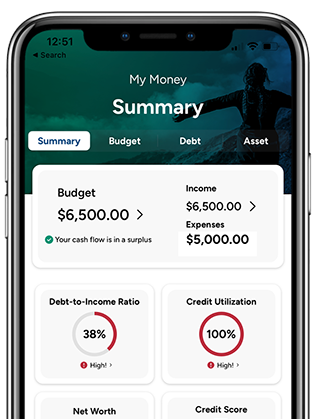Now that you have figured out where your money goes and you have set SMART financial goals, it is time to create a budget. Your budget is a spending plan that details exactly how you’re going to spend your money on the things you want and the things you need.
Budgets are a balancing act between income coming in and expenses going out. You either have to have enough money coming in to pay for everything, or you need to cut back on what you are spending.
Here is a look at the components of a budget
- Income: The money you receive. Examples: paycheck from a job, allowance, payment for odd jobs such as baby-sitting or lawn mowing, gifts, interest earned on a savings account, any other money you receive.
- Expenses: What you spend money on. (Use the list you made in A1 to see what you typically spend your money on).
Expenses are broken down into different categories:
Fixed Expenses don’t change. They are often a monthly payment. Examples of fixed expenses would be a car loan. These are the easiest to plan for because you know exactly how much is due and when.
Variable Expenses are the things that you pay for on a regular basis but the amount changes. Examples of a variable expense would be gas and groceries. You know you need to buy these things every week, but the cost varies week to week depending on how much you need to buy.
Periodic Expenses are the expenses that occur occasionally every year. An example would be car repairs. These are things you don’t have to deal with every month, but you need to factor into your budget to make sure you have enough money for them when the time comes.
Discretionary Expenses are recurring or non-recurring expenses for goods and services which are either non-essential or more expensive than necessary. An example would be a gym membership. Although it is nice to have, it is not a necessity.
Pay Yourself First
Every time you receive money—from your allowance, a gift, a summer job or some other source—try to put some of it into savings automatically instead of spending it. This is known as “paying yourself first.” Treat your “pay yourself first” expenses as fixed expenses and you will get closer and closer to reaching your saving goals.
Example: Every time you receive money put 40 percent into the savings account you intend to build for a couple years (for your first car), 35 percent into an account for weekly/monthly expenses, and 25 percent keep as spending money (for snacks or a trip to the movies, etc.).
You can split up your money however you’d like. The importance is having a plan for your money and sticking to it. The example above would probably look different for an adult who has more expenses and isn’t saving aggressively for a specific item.
Learn to Cut Back
If you want to save even more money, try to cut back on what you spend per week and add it to your savings. Example: if you are spending $10 a week on snacks, cut it back to $7 and put that $3 a week into your savings. It may seem small but it makes a big difference over time, especially if you are putting your money in a savings account with interest payments.

